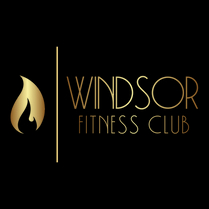 When it comes to weight loss, there are two popular forms of exercise that often come to mind: cardio and weightlifting. Both types of workouts have their own unique benefits and can contribute to weight loss in different ways. In this article, we will explore the differences between cardio and weightlifting, their effects on the body, and which one may be more effective for weight loss. So, if you’re wondering whether you should lace up your running shoes or hit the weight room, keep reading to find out!
When it comes to weight loss, there are two popular forms of exercise that often come to mind: cardio and weightlifting. Both types of workouts have their own unique benefits and can contribute to weight loss in different ways. In this article, we will explore the differences between cardio and weightlifting, their effects on the body, and which one may be more effective for weight loss. So, if you’re wondering whether you should lace up your running shoes or hit the weight room, keep reading to find out!
The Benefits of Cardiovascular Exercise
Cardiovascular exercise, also known as cardio, is any activity that gets your heart rate up and increases your breathing rate. It is a form of aerobic exercise that primarily focuses on improving cardiovascular health and endurance. Some popular forms of cardio include jogging, cycling, swimming, and dancing. Here are some of the key benefits of incorporating cardio into your weight loss routine:
- Burns Calories: Cardio exercises are excellent for burning calories quickly. The more intense the activity, the more calories you’ll burn. This can help create a calorie deficit, which is necessary for weight loss.
- Improves Heart Health: Regular cardio workouts can strengthen your heart and improve its efficiency. It helps lower blood pressure, reduce the risk of heart disease, and improve overall cardiovascular health.
- Boosts Mood and Mental Well-being: Cardio exercises release endorphins, which are known as “feel-good” hormones. This can help reduce stress, anxiety, and symptoms of depression, leading to improved mental well-being.
- Increases Stamina and Endurance: Engaging in regular cardio workouts can enhance your stamina and endurance levels, allowing you to perform physical activities for longer periods without feeling fatigued.
- Promotes Fat Loss: Cardio exercises help burn stored fat for fuel, leading to weight loss and a decrease in body fat percentage.
The Benefits of Weightlifting
Weightlifting, also known as strength training or resistance training, involves using weights or resistance to build strength and muscle mass. It typically involves exercises such as lifting weights, using resistance bands, or using weight machines. Here are some of the benefits of weightlifting for weight loss:
- Boosts Metabolism: Building muscle through weightlifting increases your basal metabolic rate (BMR), which is the number of calories your body burns at rest. This means that you’ll burn more calories throughout the day, even when you’re not exercising.
- Increases Muscle Mass: Weightlifting stimulates muscle growth and development. Having more muscle mass can lead to a higher calorie burn, as muscle tissue burns more calories than fat tissue.
- Improves Body Composition: Weightlifting helps shape and tone your body, leading to a more defined and sculpted appearance. It can also help prevent muscle loss that often occurs during weight loss.
- Strengthens Bones: Weightlifting is an excellent way to promote bone health and prevent conditions such as osteoporosis. It helps increase bone density and strength, reducing the risk of fractures and injuries.
- Enhances Functional Strength: Strength training improves overall strength, which can make daily activities easier and reduce the risk of injury. It can also improve posture, balance, and coordination.
The Role of Diet in Weight Loss
While both cardio and weightlifting can contribute to weight loss, it’s important to note that exercise alone is not enough. A balanced and healthy diet plays a crucial role in achieving weight loss goals. Here are some key dietary considerations for weight loss:
- Calorie Deficit: To lose weight, you need to consume fewer calories than you burn. This can be achieved by creating a calorie deficit through a combination of exercise and proper nutrition.
- Balanced Macronutrients: Ensure your diet includes an appropriate balance of macronutrients, including carbohydrates, proteins, and fats. Each macronutrient plays a vital role in the body and should be consumed in appropriate proportions.
- Whole Foods and Nutrient Density: Focus on consuming whole, unprocessed foods that are rich in nutrients. These foods are typically lower in calories and higher in essential vitamins, minerals, and fiber.
- Portion Control: Pay attention to portion sizes and practice mindful eating. Be aware of your hunger and fullness cues, and avoid overeating.
- Hydration: Stay hydrated by drinking an adequate amount of water throughout the day. Water helps with digestion, metabolism, and overall health.
Combining Cardio and Weightlifting for Optimal Weight Loss
While cardio and weightlifting have their own unique benefits, combining the two can be the most effective approach for weight loss. Here’s how you can combine cardio and weightlifting in your fitness routine:
- Alternate Days: Designate specific days for cardio workouts and weightlifting sessions. This allows for adequate recovery time and prevents overtraining.
- Interval Training: Incorporate high-intensity interval training (HIIT) into your cardio workouts. This involves alternating between short bursts of intense exercise and periods of active recovery. HIIT is an efficient way to burn calories and improve cardiovascular fitness.
- Circuit Training: Perform weightlifting exercises in a circuit format, incorporating cardiovascular movements between sets. This helps keep your heart rate elevated and adds a cardiovascular component to your strength training routine.
- Prioritize Strength Training: If your primary goal is weight loss, focus on strength training exercises that target multiple muscle groups. Compound exercises such as squats, deadlifts, and bench presses are effective for building strength and burning calories.
- Progressive Overload: Continually challenge your muscles by gradually increasing the weight, reps, or sets in your weightlifting routine. This helps promote muscle growth and prevents plateaus.
Both cardio and weightlifting have their own unique benefits for weight loss. Cardio exercises are excellent for burning calories, improving cardiovascular health, and boosting endurance. On the other hand, weightlifting helps build muscle, increases metabolism, and improves body composition. Combining both cardio and weightlifting in your fitness routine can maximize weight loss results and provide overall health benefits. Remember to prioritize a balanced diet and lifestyle factors to support your weight loss goals. Consult with a healthcare professional or certified fitness trainer to determine the best approach for your specific needs and goals. So, lace up your running shoes, grab those dumbbells, and get ready to achieve your weight loss goals with a well-rounded fitness routine!
Contact us (707-757-4441) for more Information!
Memberships | Class Schedules
Hot Barre | Hot Pilates | Hot Yoga
—
 About Windsor Fitness Club
About Windsor Fitness Club
We are a positive community of healthy go-getters! We offer state of the art Pilates, Barre, and Yoga Group Classes in a heated environment. Classes are 45 minutes in length, and designed to challenge clients of all fitness levels! Our workouts are innovative, mindful & functional and will help you mentally connect to your muscles and push yourself to new levels of fitness! The music will be turned up and your heart will be pumping! We are excited to help you transform the way you look, feel, and function!
> Learn More
